A wide variety of parasites can live in humans. It can not only be multicellular and protozoa, but also viruses, bacteria, fungi. They parasitize at the expense of the human body. Harmful microorganisms can live not only in the intestines, but also in muscles, blood, etc. With parasites, you need to start the fight as early as possible. Otherwise, complications cannot be avoided.
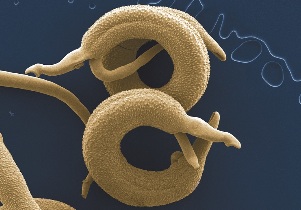
Varieties of parasites
There are many parasitic organisms that thrive in the human body. They all have specific characteristics.
roundworms
Roundworms or nematodes comprise around 1000 subspecies in their group. The best-known representatives are pinworm, trichina, toxocara, hookworm, necator and roundworm. They enter the body through the mouth or skin. The main representatives of roundworms are described in the table.
| Parasite | Description |
| Pinworms | This is a round worm with a length of 2-12 mm. Women are usually taller. These representatives parasitize in the lower intestine and in the large intestine. Adult women lay eggs in the perianal region. Most often, such representatives can be found in children. When scratching the anus, which itches in the presence of such parasites, eggs fall on the patient's hands. Itching is one of the first symptoms. |
| Trichinella | Trichinella is a roundworm. Pests get into the body along with poorly processed meat. After they have entered the body, its complete intoxication begins. In an advanced case, parasites can be fatal in humans. |
| Toxocars | This parasite commonly lives in animals, including cattle. Young children are very prone to toxocariosis. The parasite multiplies extremely quickly, so treatment should be started immediately. |
| hookworms | It is believed that all 4 people on the planet are carriers of this parasite. An adult can live in the host's body for 8 years. With proper and timely treatment, 95% of 100 patients can be cured of hookworms. The parasite enters the body along with the contaminated soil. |
| Nekator | These representatives are small. Their length reaches 2 cm. The female pest lays up to 10, 000 eggs per day. The larvae of the parasites get into the external environment together with the feces. |
| Ascaris | Roundworms can grow up to 35 cm long. First, the parasite develops in the small intestine and then spreads throughout the body. In order for individuals to become sexually mature, it is necessary to re-enter the body. |
After the penetration of roundworms into the human body, the process of the development of pathological symptoms begins. The intestinal walls become inflamed and because of this, the digestive system is disturbed. Parasites in the body are a serious threat. They take in some of the nutrients.
tapeworms
Tapeworms or cestodes in the body cause cestodes. Adults only occur in the intestine. The larvae can spread throughout the body. A person can become infected with the following tapeworms:
- Wide band. This is the longest helminth in the world. It can grow up to 15-17 meters. The wide tapeworm causes considerable damage to the human body. Ulcers form at the site of their attachment.
- bull tapeworm. This is another important parasite that has a negative impact on human health. It is most commonly found in the small intestine. Infection occurs when eating contaminated meat that has undergone poor thermal processing.
- Pork tapeworm. The tapeworm can grow to be several meters long. Pests can be transmitted from wild and domestic pigs.
- Echinococcus. Eggs get into the environment along with faeces. Infection often occurs when personal hygiene is not followed.
- Alveococcus. The parasite becomes 2. 2 mm long. Infection occurs through food contaminated with contaminated feces.
The pathology manifests itself mainly in diseases of the gastrointestinal tract. A disturbance of nerve activity occurs. A person's well-being is constantly deteriorating.
Fluke Worms
leeches are flatworms. These are some of the most dangerous representatives. Almost all leeches parasitize the owner's body. They only change hands at a certain stage of development.
The change of host eliminates possible overpopulation in the host's body. The most common representatives of leeches are:
- Siberian coincidence. Infection occurs when eating fish that has received inadequate heat treatment. The eggs of this pest are found in human fecal matter. The parasite becomes up to 13 mm long. The body is almost completely transparent.
- Liver fluke. A parasite that can infect both animals and humans. An adult is a maximum of 8 cm tall. Infection is possible when using dirty plants on which chance is already in its intermediate form. There is also a risk of contamination from water.
- Shistosoma. If left untreated, a schistosome can lead to the sudden death of the patient. Only 6 varieties of this parasite are dangerous to humans. The microorganism can be in the blood vessels, bladder. Infection often occurs while swimming in fresh water.
- Clonorhis. People who work in the public catering sector are susceptible to infections. Clonorchis is most common in men over 35. You are at risk. The parasite's eggs are excreted in the feces.
Most often, parasites invade the body when they eat raw or poorly cooked fish. Another common option is the presence in the diet of poorly washed vegetables and fruits.
Trematodes
This is a kind of flatworm. Their main feature is the presence of suction cups. The trematodes include:
- Opisthorchiasis. The source of infection is raw or poorly cooked fish. Symptoms are nonspecific, so it is difficult to diagnose the disease. The result is usually unfavorable.
- fascioliasis. When infected, the liver and biliary system are damaged. A characteristic sign of human infection is a sharp increase in body temperature to 39-40 degrees.
- dicroceliosis. Helminthiasis, the causative agent of which is lanceolate coincidence. In the case of a pathology, the liver and gallbladder are also damaged.
The parasite is widespread all over the world and poses a serious threat to livestock and humans.
Protozoa
The simplest parasites are unicellular pests. Some of the representatives are the oldest inhabitants on earth. Parasites successfully adapt to new conditions and multiply due to their simple structure. The pest can live both in the skin and directly in the human body.
The movement of unicellular organisms can be carried out with cilia, flagella and pseudopods. These types of parasites include:
- flagellates. They have an oval or pear-shaped body. The main difference is the presence of flagella. Their number can be 1-8. The parasite sucks food through the entire surface of the body. Infection can occur through insect bites, violations of hygiene rules, as well as promiscuous sexual activity.
- Sporoviks. They can live in different human organs. Nutrition, breathing and the release of waste products occur over the entire surface of the pest's body.
- Infusorium. These are ciliary or sucking parasites. They live in fresh water, earth.
- Sarcode. The parasite consists of one cell. Some species of Sarcode can live in human teeth if hygiene is inadequate.
Unicellular organisms can lead to a number of dangerous diseases, including malaria, amebiasis, giardiasis, etc. Infection is possible by the contact-household method, fecal-oral, contaminated product, as well as a communicable method.
Protozoa - infections caused by the activity of the simplest microorganisms in humans. Animals are also prone to pathologies. The pathologies that cause them include fungal infections.
In most cases, protozoan organisms come from animals to humans. You can also enter via water, ground and person-to-person.
Ectoparasites
Ectoparasites are parasites that live on the surface of the body and on external organs. You can be a provocateur for skin diseases. In addition, ectoparasites carry various infections.
The group of ectoparasites includes:
- lice. It's a blood sucking parasite. The oral organ pierces the human skin with ease. If necessary, lice can fast for several days. Lice can be body and head lice. Lice are a serious threat because they can transmit infectious diseases.
- Bloch. These are temporary ectoparasites. Passed from person to animal and back. Provides severe bite discomfort.
- Ixodid ticks. Unlike other ectoparasites, ticks are easy to remove. Vegetable oil or paraffin is used for this. The main thing is to take the extracted tick for examination. This will help ensure that he is not a carrier of infection
Most often ectoparasites infect animals, but infections in humans are also possible, e. g. B. ticks or lice. Pests feed on blood. They have a high rate of reproduction.
Helminths
Currently, experts identify 280 types of worms. All of them are able to live and develop in the human body. It is a mistake to believe that helminthiasis only occur in people from disadvantaged families. Worms can also appear in wealthy people who carefully monitor their hygiene.
Helminths can be infected in many ways. Parasites can be transmitted from animal to person and through contact with contaminated land. Most often, worms appear in children. This is due to non-compliance with preventive measures.
The first symptoms may not appear immediately. They can appear after 2-3 days or several weeks. It all directly depends on what kind of parasite has entered the body. Helminthiasis can be both acute and chronic.

Classification of parasites
All parasites are divided into types. There are large groups of:
- method of infection;
- location method;
- biological properties.
Each of the groups has its own properties.
According to localization type
Assign temporary, stationary and transit localization forms. In the first case, the parasite lives in the owner's body only at a certain stage of development. In stationary form, pests are constantly in the human body. The temporary form is the migration period of the parasite into its habitat.
During treatment, doctors always take into account not only the shape of the parasite, but also the location of its location. Overall, pests are divided into two main categories. Parasites that live on the skin are called ectoparasites. Pests that have settled in the owner are endoparasites.
Internal parasites, in turn, are divided into two categories - parasites of tissues and parasites of abdominal organs. There are also atypical forms. In this case, the pests are in places that are unusual for them.
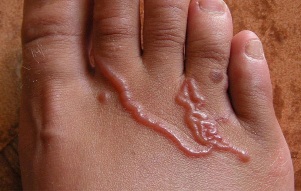
External parasites can be temporary or permanent. Those who feed on blood through bites are temporary. They can cause infections. The rest of the parasites violate the integrity of the skin.
There are also intracellular pests. This includes, for example, Plasmodium malaria.
According to the infection method
Parasites can also be classified according to the type of infection. The following penetration methods are distinguished:
- Contact and household. In this case, parasites invade due to violations of sanitary and hygienic standards.
- faeces-oral. In this case, the infection occurs from dirty hands, as well as low-quality products.
- transmission tracks. Infection occurs through blood-sucking insects.
- Active paths. This is the name of the method of infection in which the parasites get to the owner at the larval stage.
Thanks to the multitude of entry options, you can get parasites anywhere. Only preventive measures make it possible to reduce the risk of infection.
According to biological characteristics
According to biological characteristics, parasites are divided into two categories - unicellular and multicellular. The first group includes sporozoa, ciliates, flagellates, and histological amoebas. The main method of infection is to ignore the rules of personal hygiene.
Worms, insects and arachnids are commonly referred to as multicellular parasites. The risk of infection with helminths, for example, is that the worms damage tissue and internal organs.
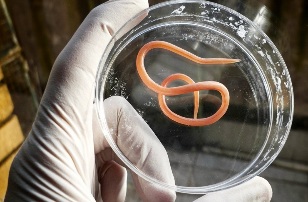
The most common multicellular parasites are worms.
Multicellular parasites are more dangerous. They are characterized by a fast reproduction rate and a complex life cycle.
Where parasites can be found
Some parasites can live in certain parts of the body, while others can spread throughout the body. It is difficult to diagnose a parasite infection.
Roundworms mainly live in the digestive tract. Infection occurs when unwashed food is eaten.
Parasites can be found under human skin. Rishta is one of these representatives. The pest enters the body when drinking raw water. Tourists traveling to countries where Rishta is common are often infected.
Internal organs infect leeches. They can live in the liver, pancreas, intestines, and biliary tract. The main source of infection is consumption of raw fish.
There are also tissue microorganisms. They can live in the spinal cord, muscles, and connective tissue. The main source of infection are pets.
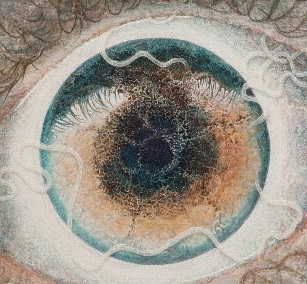
There are also eye parasites. They can be round, flat, ringed, and prickly. The main source of infection is poor heat treatment of fish or contact with infected animals.
Risk of parasite infection in humans
Every parasitic infection requires urgent treatment. The earlier treatment is started, the faster the pests can be treated and the fewer complications there are.
Parasites in the human body can lead to serious pathologies:
- Some pests cause the development of acute colitis. The condition is made significantly worse when the patient has an ulcer. There may be blood in the stool, which is dangerous for anemia to develop. Treatment should be started as soon as possible.
- Parasites can settle in the brain or in the liver. This condition can be dangerous not only for health, but also for the patient's life. If infected, there is a risk of developing a cyst.
- Pests living in the intestine can impair its integrity. There is also a risk of constipation.
- Parasites deal a serious blow to the human immune system. The destruction of leukocytes and erythrocytes occurs. This affects a person's general wellbeing almost instantly.
- Pests ingest nutrients from the human body. The risk of thyroid disease, anemia increases. In addition, the condition of the hairline and nail plates deteriorates.
- The body is poisoned by poisonous components. The waste products of parasites are toxic to humans. The more of them, the worse the person's well-being. The risk of allergies, asthma and asthma attacks is increased.
Parasites are particularly dangerous for children. Infection leads to a variety of uncomfortable symptoms. The child loses appetite, body weight decreases, apathy and fatigue appear. Your toddler can cry and become restless often. Visible dark circles appear under the eyes.
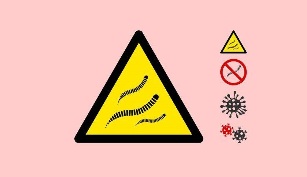
The baby is growing, so it is important that it is getting enough nutrients. This is not possible with parasites in the body. The baby's condition is rapidly deteriorating every day. The child can be severely delayed in development.
The danger of parasites is that they can live in a person for months and years without making themselves felt in any way. During this time it becomes considerably weakened, it faces a lack of nutrients. Possible total exhaustion. Only timely treatment can prevent this.
Factors that contribute to the infection
Often people are responsible for the appearance of worms. There are a number of factors that increase the likelihood of pests. These include:
- Refusal to wash hands before eating;
- infection with dirty shoes;
- ignore signs of worms in pets;
- drink raw water;
- eat unwashed fruits and vegetables;
- poor heat treatment of meat and fish;
- frequent eating outdoors;
- Weakening of the immune system after taking strong medication.

Parasite eggs get into the intestine. Then they are absorbed into the bloodstream and the larvae are transported throughout the body.
The parasites spread the fastest in large groups of children. This is due to the fact that hygiene rules are ignored and contacts are too close.
Symptoms of the appearance of parasites in the human body
It is important to know that sometimes parasites do not manifest at all over a long period of time. The symptoms are often general and almost invisible at first.
The first symptoms of parasites in the body are a rapid and unreasonable loss of body weight, as well as the appearance of an itchy sensation in the anus. The presence of parasitic infections can only be verified through diagnosis. Symptoms of infection often include various disorders of the nervous system and general weakness of the body.
A person with parasites suffers from a lack of vitamins. This contributes to the appearance of fatigue, severe drowsiness and constant apathy.
When pests live in the intestines, problems with the digestive system are inevitable. Diarrhea can alternate with constipation. There is a risk of increased gas formation and pain in the right hypochondrium.

If parasites are present, a person's protective functions are restricted. Due to poor immunity, there is a risk of various infectious diseases.
One of the most obvious signs of parasites is the spontaneous appearance of allergy symptoms. In addition, allergic rhinitis or persistent dry cough can begin to bother.
Diagnosis of helminthiasis
Only after diagnosis and confirmation of the presence of worms can treatment continue. To make sure parasites are present, doctors use several diagnostic methods:
- Macroscopic. For him, the patient's feces are taken for analysis. A microscope or magnifying glass is used as additional equipment. This method is used to find pinworms, or ascaris.
- microscopic. To do this, a thick smear is taken, which is examined further on a special membrane.
- Immunological. In this case, the blood is checked for antibodies to a certain type of helminth. This method is used to check for a large number of different parasites.
- biopsy. The presence of worms is determined by examining muscle tissue.
- Instrumental. Such methods are used to determine how much damage the internal organs and tissues are caused by parasites. These methods include ultrasound, x-ray, computed tomography.
Treatment of parasite infestation
To eliminate parasites, you can give preference to both medicinal methods and folk methods. It is best to combine them. In this case, the effectiveness of therapy will be most pronounced and fastest.
The treatment is selected individually. The most effective therapy is selected by the doctor, taking into account all the characteristics that are present in a particular patient.
Folk remedies against parasites in the human body
Traditional treatments are no less effective than drugs. Their main advantage is complete safety for the patient.
One of the best medicines is garlic juice. It contains phytoncides. It is they who destroy pests in the body. The juice is taken three times a day. Start with 5 drops a day. The dosage is increased gradually.
Another effective remedy is the tincture of wormwood. Like garlic, it contains phytoncides. To prepare the drug, 1 tablespoon of wormwood is mixed with 100 ml of alcohol. The drug is stored in a dark place for a week. Take 20 drops 3 times a day. The tincture is used 20 minutes before meals.
It is good to include a lot of carrots in your diet and drink their juice. It has an adverse effect on parasites. It is recommended to take 1 glass of fresh carrot juice 30 minutes before meals.
Herbal cookings have a great effect on the body. To prepare an anti-parasite remedy, mix 1 tablespoon at a time. Tansy, wormwood, aspen bark. All components are poured into a glass of water and brought to a boil. Take after cooling. Drink the broth 125 ml three times a day before meals.
The main disadvantage of conventional therapy is that some drugs can cause an allergic reaction if they are intolerant to certain components. In this case, you need to rethink your therapy and find a brew or tincture, the composition of which does not contain allergens.
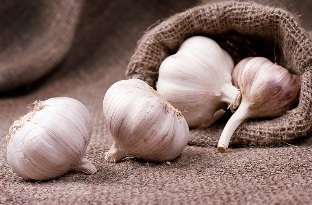
There is also an opinion that to fight a small number of parasites, it is enough to rethink your diet. You need to add the following to the menu:
- pumpkin seeds;
- raw fruits and vegetables;
- coconut and pineapple;
- chile;
- garlic;
- various vegetable oils.
All of these products have a negative effect on the activity of parasites.
Medicines against parasites
Medicines are more effective. The main thing is to take all drugs deliberately. It is important to know that they are effective, so their use is only possible after consulting a doctor.
Self-medication with drugs against worms is strictly prohibited. There is a risk that the patient will worsen his own health just by using the wrong medication required in a particular case.
Prevention of parasites in the human body
It is easier to prevent parasitic microorganisms from appearing than it is to control them in the future. Everyone should adhere to existing security measures. We recommend:
- Use only purified water for washing and drinking.
- Do not use other people's personal hygiene items.
- give animals prophylactic medication against parasites;
- stop eating dirty fruits and vegetables;
- stop eating raw fish.
A diagnosis is required at regular intervals to ensure that no harmful microorganisms are present. When preventive measures are taken, the risk of infection is minimal. It is especially important to ensure that the children follow the recommendations. You belong to the main risk group.






























